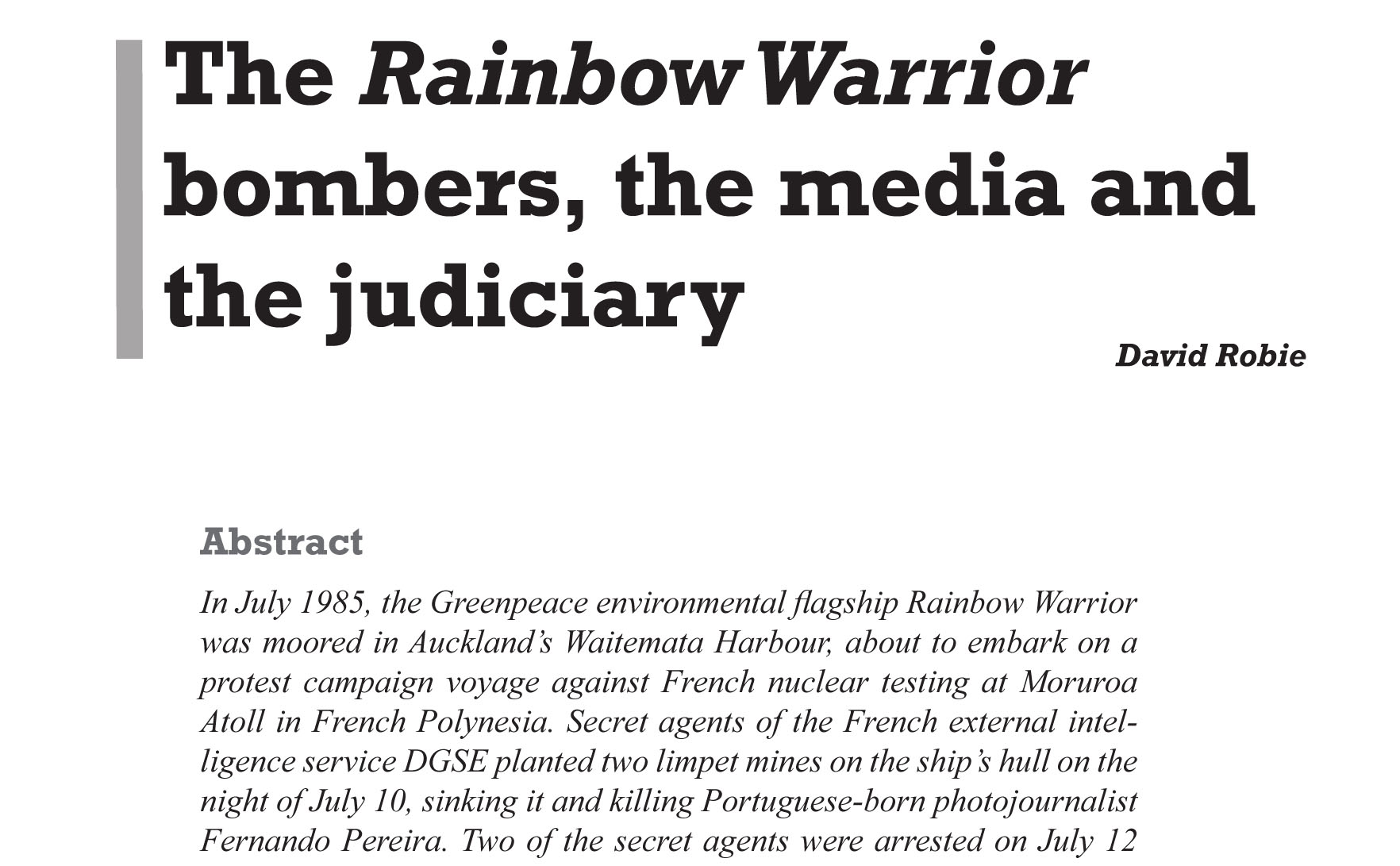
 In July 1985, the Greenpeace environmental flagship Rainbow Warrior was moored in Auckland’s Waitemata Harbour, about to embark on a protest campaign voyage against French nuclear testing at Moruroa Atoll in French Polynesia. Secret agents of the French external intelligence service DGSE planted two limpet mines on the ship’s hull on the night of July 10, sinking it and killing Portuguese-born photojournalist Fernando Pereira. Two of the secret agents were arrested on July 12 during an exhaustive police investigation.
In July 1985, the Greenpeace environmental flagship Rainbow Warrior was moored in Auckland’s Waitemata Harbour, about to embark on a protest campaign voyage against French nuclear testing at Moruroa Atoll in French Polynesia. Secret agents of the French external intelligence service DGSE planted two limpet mines on the ship’s hull on the night of July 10, sinking it and killing Portuguese-born photojournalist Fernando Pereira. Two of the secret agents were arrested on July 12 during an exhaustive police investigation.
The Rainbow Warrior affair, involving state terrorism by a friendly nation, became iconic in New Zealand history because it highlighted NZ opposition to nuclear testing in the Pacific. New Zealand High Court closed circuit television (CCTV) footage of the criminal proceedings showed the two French agents – Major Alain Mafart and Captain Dominique Prieur – pleading guilty to manslaughter after being charged with murder. During the next two decades, five separate attempts were made to gain legal access to the videotape for news and current affairs programs.
For the first four attempts, lawyers acting for Mafart and Prieur succeeded in blocking public release of the footage on privacy and administration of justice grounds. However, the fifth attempt, by state-owned public broadcaster Television New Zealand, was finally successful in the Court of Appeal and the footage was broadcast on August 7, 2006. A further appeal to the Supreme Court by the agents was dismissed.
This article analyses a case study of the 20-year struggle to broadcast this historic footage and how a remarkable triumph in the public right to know was achieved and balanced against privacy values.
Robie, David (2007). The Rainbow Warrior bombers, the media and the judiciary. Australian Journalism Review, 29(2), pp. 49-62.
PMW@DSpace, AUT


